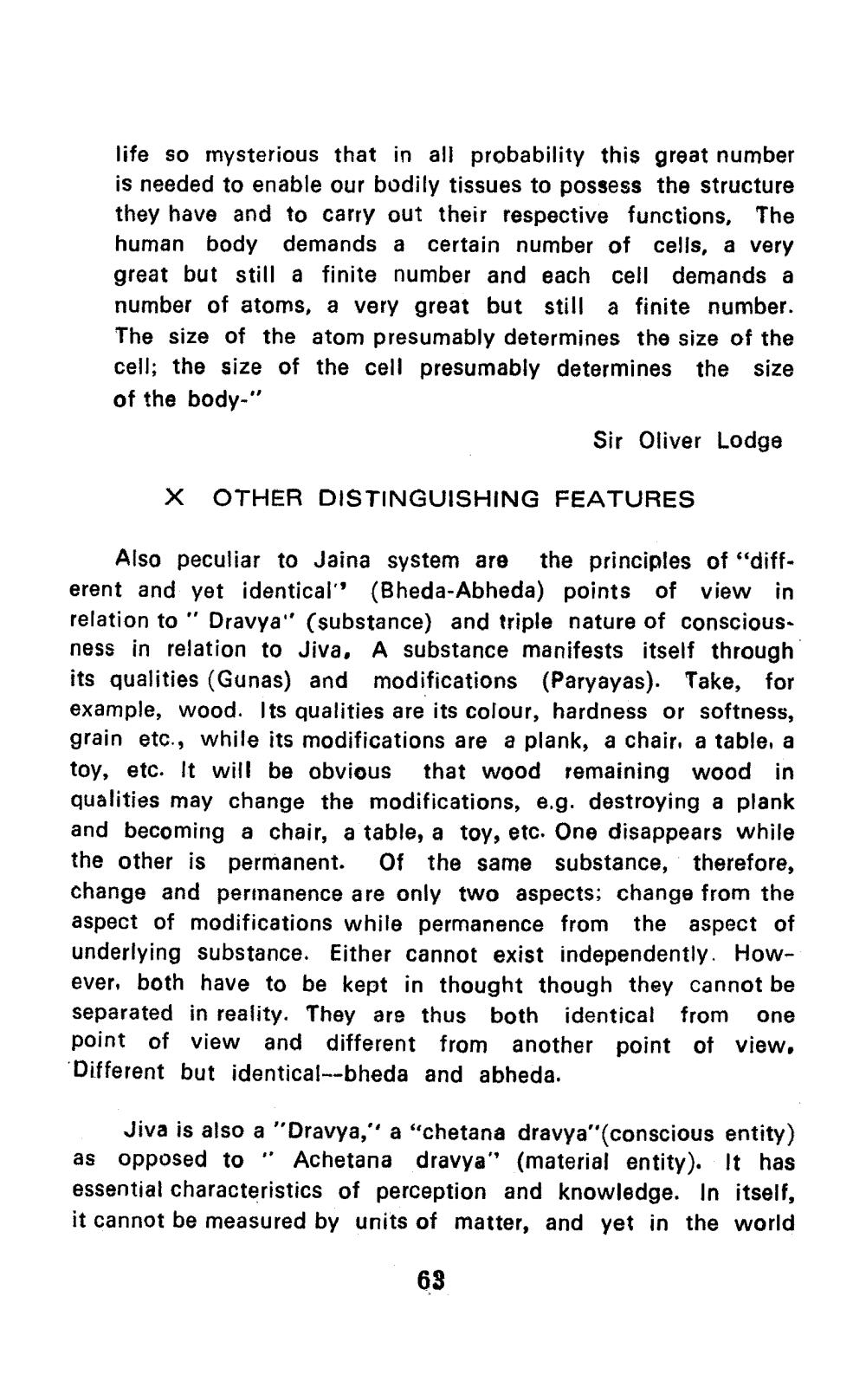________________
life so mysterious that in all probability this great number is needed to enable our bodily tissues to possess the structure they have and to carry out their respective functions, The human body demands a certain number of cells, a very great but still a finite number and each cell demands a number of atoms, a very great but still a finite number. The size of the atom presumably determines the size of the cell; the size of the cell presumably determines the size of the body."
Sir Oliver Lodge
X OTHER DISTINGUISHING FEATURES
Also peculiar to Jaina system are the principles of “different and yet identical" (Bheda-Abheda) points of view in relation to " Dravya'' (substance) and triple nature of conscious. ness in relation to Jiva, A substance manifests itself through its qualities (Gunas) and modifications (Paryayas). Take, for example, wood. Its qualities are its colour, hardness or softness,
n etc., while its modifications are a plank, a chair, a table, a toy, etc. It will be obvious that wood remaining wood in qualities may change the modifications, e.g. destroying a plank and becoming a chair, a table, a toy, etc. One disappears while the other is permanent. Of the same substance, therefore, change and perinanence are only two aspects; change from the aspect of modifications while permanence from the aspect of underlying substance. Either cannot exist independently. However, both have to be kept in thought though they cannot be separated in reality. They are thus both identical from one point of view and different from another point of view, Different but identical--bheda and abheda.
Jiva is also a "Dravya,'' a "chetana dravya'(conscious entity) as opposed to " Achetana dravya" (material entity). It has essential characteristics of perception and knowledge. In itself, it cannot be measured by units of matter, and yet in the world
63




